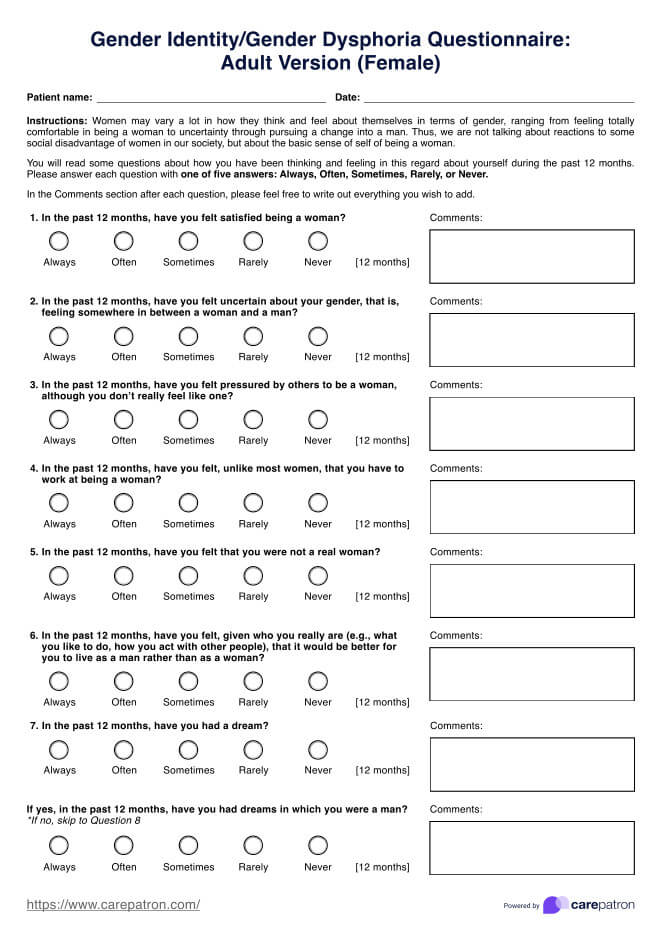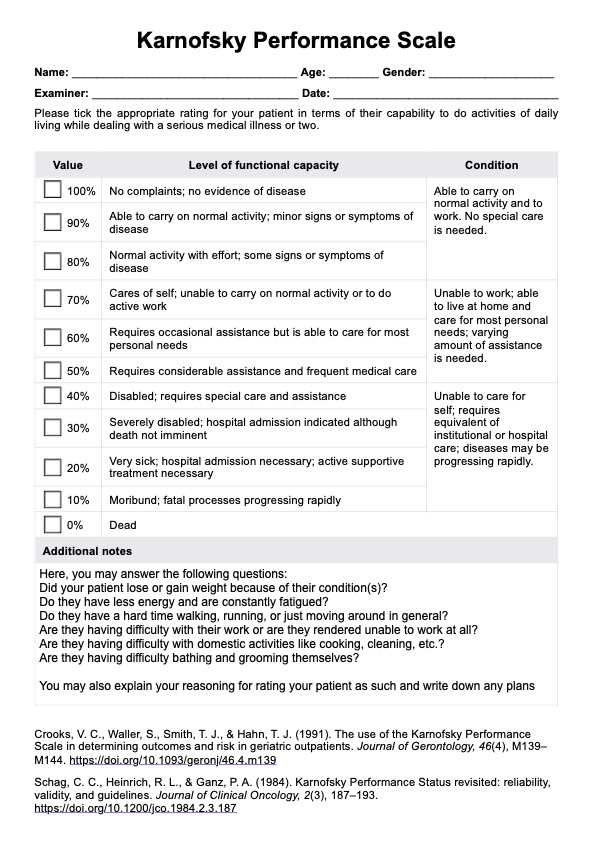Talar Tilt Test
Uncover the crucial aspects of the Talar Tilt Test, an essential tool for assessing ankle ligament integrity. Grab your free PDF guide today!


What is a Talar Tilt?
The Talar Tilt is an important orthopedic examination performed by healthcare professionals to evaluate the integrity of the lateral and medial ligaments of the ankle, particularly following an inversion injury. The test is named after the talus bone, one of the key bones within the ankle joint.
When an inversion trauma, such as a common ankle sprain, occurs, the lateral ligaments can be overstretched or torn. This injury is where the Talar Tilt Test is particularly valuable. By moving the foot and ankle in specific ways, the test helps assess any instability in the ankle joint, which can indicate a damaged ligament.
The Talar Tilt Test focuses on three main ligaments: the anterior talofibular ligament, the calcaneofibular ligament, and the posterior talofibular ligament on the lateral side of the ankle. Additionally, it examines the deltoid ligament complex on the medial side.
In essence, the Talar Tilt Test is a critical tool in the early detection of ligament injury. Identifying these injuries early on can help determine the proper treatment path and prevent complications such as chronic ankle instability or arthritis. Whether you're an athlete who's rolled an ankle or an individual who's suffered a similar injury, this test can play a pivotal role in your road to recovery.
Talar Tilt Test Template
Talar Tilt Test Example
How does this Talar Tilt Test work?
The Talar Tilt Test is pivotal when assessing potential ligamentous injury in the ankle, particularly after inversion trauma. It's a hands-on examination that hinges on the delicate manipulation of the ankle to discern the stability and integrity of the lateral and medial ligaments.
In this section, we'll dive deep into how this invaluable test works, providing a comprehensive guide for health professionals in a conversational and informative manner. Whether you're a seasoned practitioner or a medical student, understanding the Talar Tilt Test is indispensable in ensuring optimum patient care.
Step 1: Positioning the Patient
Have the patient sit comfortably with their foot and ankle hanging freely off the edge of the examination table. This unsupported position is crucial for obtaining accurate results.
Step 2: Adjusting Foot Position
The patient's foot should be placed in a position of mild plantarflexion, typically about 10-20 degrees. This is the natural resting position of the foot and allows for a better assessment of the ankle ligaments.
Step 3: Stabilizing the Leg
Using one hand, the examiner should stabilize the patient's distal lower leg. This is typically done just above the ankle bones (malleoli). This hand will help maintain the foot's plantarflexed position and prevent unwanted movements.
Step 4: Performing the Inversion
With the other hand, the examiner carefully inverts the hindfoot. Inversion refers to the movement of the sole towards the body's midline.
Step 5: Palpating the Talus
The examiner then palpates the lateral aspect of the talus, a bone in the ankle. They are checking for any tilting or laxity (looseness), which would indicate potential ligament injury. Excessive tilting or laxity under inversion stress constitutes a positive Talar Tilt Test, suggesting a ligament sprain or tear.
Step 6: Comparing Sides
The examiner compares the findings from the affected ankle to the unaffected one. This is done to understand the extent of any potential ligament damage. Noticing a significant difference in tilt or laxity between the two sides may indicate an injury to the ligaments on the affected side.
It's essential to note that while the Talar Tilt Test is valuable, it's just one part of a complete ankle assessment. Other tests and clinical findings should be considered for a comprehensive diagnosis and treatment plan.
Scoring
The Talar Tilt Test isn't scored quantitatively. Instead, it relies on the clinical judgment of the healthcare professional performing the test. They assess and compare the degree of inversion and eversion, along with the patient's discomfort or pain in these positions, to the unaffected side.
When to use this Talar Tilt Assessment?
The Talar Tilt Test is an essential examination when there's suspicion of an ankle sprain, especially after an inversion trauma, where the foot rolls outward. It's a go-to, first-line assessment tool for healthcare professionals dealing with such scenarios.
It quickly provides insights into the potential integrity of the ankle ligaments, and if the damage is suspected, it paves the way for further investigations like imaging studies. Additionally, the test helps monitor the healing process in patients with previously diagnosed ankle sprains.
So, the Talar Tilt Test is appropriate when ankle ligament integrity is in question, whether it's an acute scenario in an emergency room after a fall or a follow-up visit to a physical therapy clinic.
Who are these Talar Tilt Test PDFs for?
The Talar Tilt Test template is a practical resource for many healthcare professionals dealing with musculoskeletal conditions. These include:
Orthopedic surgeons
Surgeons can use it for initial assessments or follow-ups to gauge the recovery progress post-surgery.
Sports medicine physicians
With sports injuries being common, these doctors can use the test to promptly diagnose and manage ankle ligament injuries in athletes.
Physical therapists
This test is invaluable for therapists in evaluating and rehabilitating patients, helping design suitable therapy plans and monitoring improvement.
Emergency medicine physicians
In the emergency room, this test is crucial in quickly assessing the damage from acute ankle injuries.
General practitioners
GPs often encounter patients with ankle sprains and can use this test for an initial assessment and to decide if a referral is necessary.
Nurse practitioners
Nurse practitioners in orthopedic or sports medicine settings can benefit significantly from this template, aiding their holistic patient care approach.
The template's simple, comprehensive structure enables these practitioners to accurately perform the Talar Tilt Test and document the findings systematically.
.png)
Benefits of Free Talar Tilt Test
In today's healthcare environment, structured and efficient patient assessment methods are essential. The Talar Tilt Test, available as a free PDF, offers numerous advantages that significantly aid healthcare professionals in managing potential ankle injuries. The Talar Tilt Test plays a vital role in modern orthopedic and sports medicine practices by standardizing the evaluation process and streamlining documentation.
1. Standardization of the assessment procedure
The Talar Tilt Test offers a standardized method of evaluating ankle ligament integrity. This consistency ensures accurate diagnoses across different healthcare providers and facilities. It sets a common ground for the procedure, reducing variability in the execution and interpretation of the test.
2. Easy documentation of findings for better patient tracking
Our free PDF template allows healthcare providers to document their findings structured and straightforwardly. This promotes better tracking of patient progress over time and facilitates more informed decision-making about treatment plans.
3. Comparison of results over time
Regularly using the Talar Tilt Test during follow-ups allows healthcare professionals to compare results over time. This can reveal trends in healing and recovery, providing valuable insights into the effectiveness of ongoing treatments and the potential need for adjustments.
4. Improved communication among healthcare providers
By documenting the findings of the Talar Tilt Test, communication between different healthcare providers involved in a patient's care becomes more efficient. It enables a seamless exchange of crucial information, fostering more collaborative and coordinated care.
5. Quick reference guide for newer practitioners
Our Talar Tilt Test PDF is a helpful guide for budding healthcare professionals, assisting them in performing the test accurately and understanding its implications. This enhances their practical skills and contributes to their professional growth.
Commonly asked questions
The interpretation is based on comparing the affected ankle to the unaffected one. Excessive tilt or pain during inversion may indicate a sprain or tear of the lateral ligaments.
The test measures the integrity of the lateral and medial ankle ligaments, particularly the anterior and calcaneofibular ligaments.
The patient is seated with the foot and ankle hanging unsupported. The foot is in mild plantarflexion, typically around 10-20 degrees. The examiner stabilizes the lower leg with one hand just above the ankle bones (malleoli) while the other hand inverts the hindfoot. The lateral aspect of the talus is palpated to assess for any tilting or excessive movement, which could indicate ligamentous injury.
The procedure is repeated on the unaffected side for comparison. Pain during the test or a more significant degree of tilt than the unaffected side suggests a positive Talar Tilt Test, indicative of potential ligament damage.


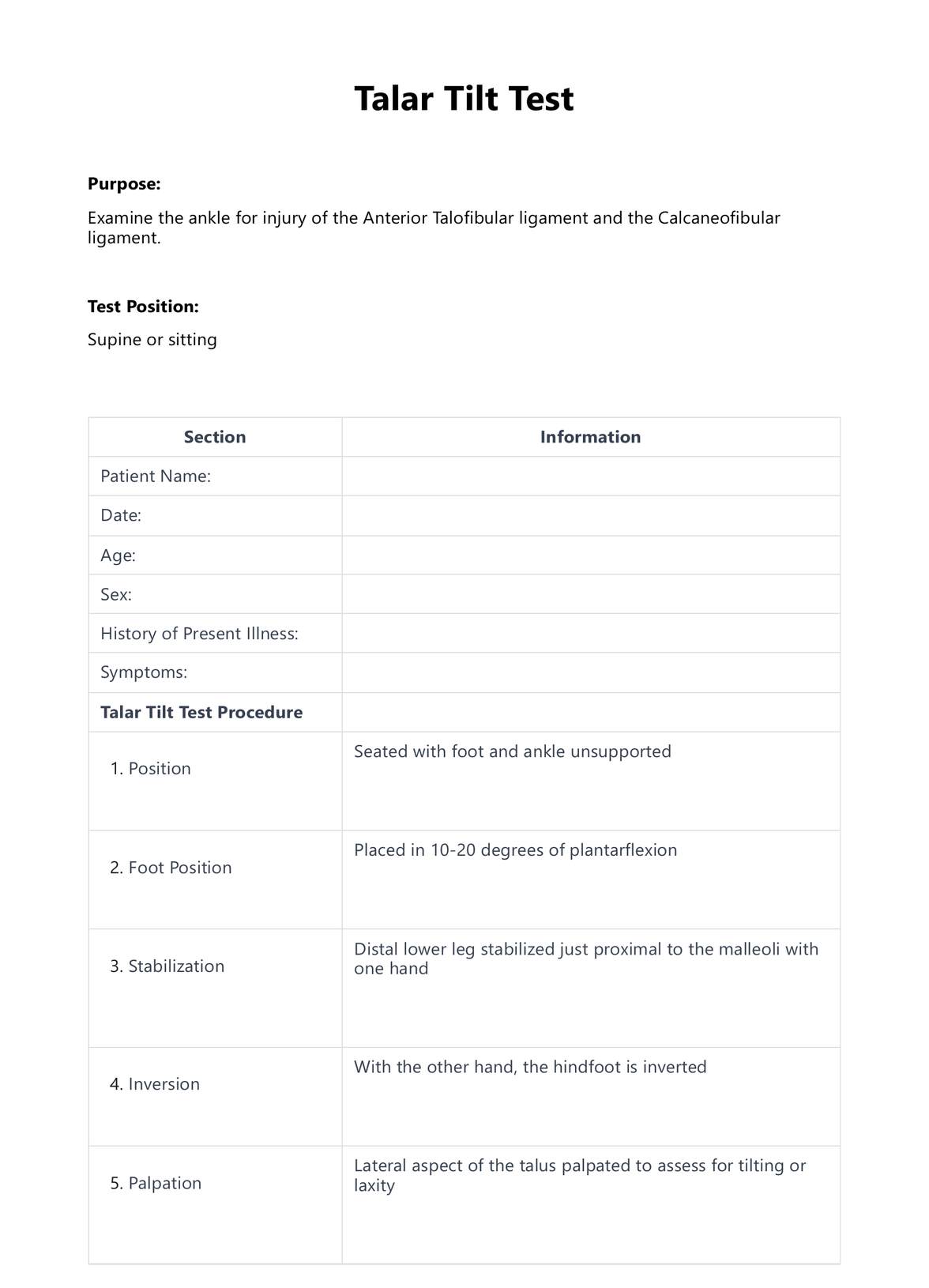
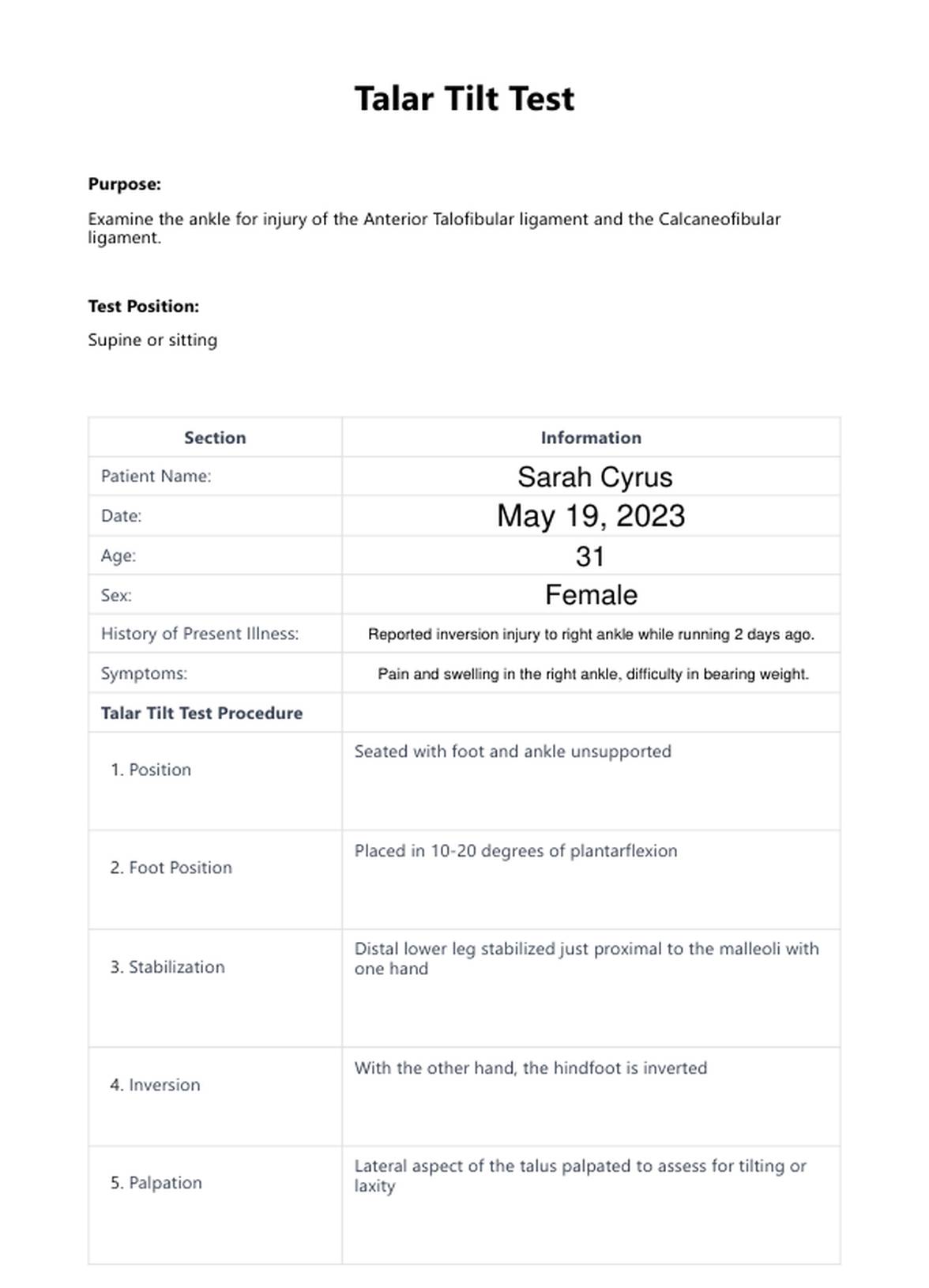

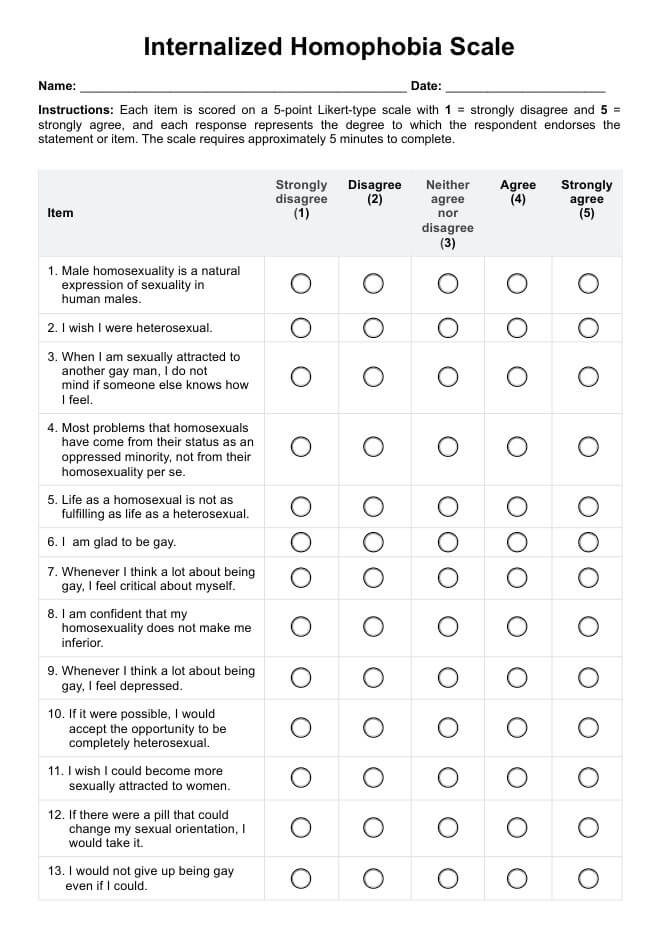











-template.jpg)




















































































